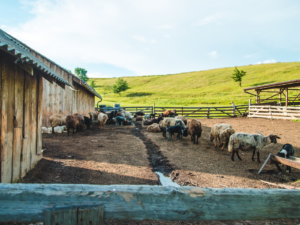
Living Labs became an answer to many contemporary trends, as users changed roles from passive consumers to active prosumers of content, innovators required shorter go-to-market times and a globalized market entered people’s everyday activities through the Internet and technology.
While there is no standard definition of the concept of a Living Lab, it has been largely defined as innovation networks based on the philosophy of user-driven, open innovation. Creating innovative services that have market impact is not a straightforward process and for SMEs, the innovation process can be even harder to accomplish. Some SMEs might not have the resources, or all the needed competencies, to carry out the innovation activities. Living Labs strive to support the innovation process for all involved stakeholders, from manufacturers to end-users, with special attention to SMEs and a focus on potential users.
In this article, we will try to simplify the definition of a Living Lab in the context of the work Berytech does, its benefits and principles, and present quick example of active Living Labs and Living Lab networks in the world.
Living Labs: A Definition
Many definitions were given to Living Labs since the concept appeared in Europe in the early 2000s. A living lab takes the innovation and experimentation component of conventional labs, where experts work and invent new solutions and put them in a living environment, where different stakeholders highlight the needs and opportunities, try the solutions and inventions, give feedback, co-create, do demonstrations and focus the research on real life needs.
So, a living lab is a real-life open innovation and experimentation environment where users and producers co-create innovations. Living labs have been characterized by the European Commission as Public-Private-People Partnerships (PPPP) for user-driven open innovation.
A living lab employs four main activities:
- Co-Creation: co-design by users and producers
- Exploration: discovering emerging usages, behaviors and market opportunities
- Experimentation: implementing live scenarios within communities of users
- Evaluation: assessment of concepts, products and services according to socio-ergonomic, socio-cognitive and socio-economic criteria.
Living labs are user centered. Their main aim is to evaluate a certain product or service from its user aspect side, allowing users to give feedback to the founder about the current features of the service or product. This helps entrepreneurs to further develop their product/service according to the needs of the customer, thus ensuring a successful application in the market or industry.
This unique capability enables living labs to generate concrete, tangible innovations based on user and community contributions and at the same time to advance academic understanding of open and user innovation principles and processes.
Living Labs: Stakeholder Benefits
The living labs approach offers benefits to companies, users, developers, and public financiers.
Companies benefit through cost-efficient access to end-user data and user experiences. They also save money by being able to make changes to a product much earlier in the development process based on user feedback.
Users gain opportunities to influence the development of products. They also benefit from the solutions that are developed, which in many cases are solving problems that affect their everyday lives and which may have been otherwise unsolvable. Users also may perceive the new, user-driven products to be more functional because of the co-creative development process.
Living labs also contribute to the core activities of developers; they bring opportunities and resources, and the developers bring their capabilities to develop real-world solutions to the users’ problems.
And, finally, public financiers benefit from activities and outcomes that support their objectives.
Living Labs: Key Principles
In living lab activities there are key principles that should permeate all operations including Sustainability, Openness, Value, Influence, and Realism.
Sustainability: It is important that living labs take responsibility for their ecological, social and economic effects. The innovation processes supported by a living lab must address sustainability issues, for instance, by choosing the right materials, implementing environmentally friendly processes and considering the social and economic impact that the innovation might have once implemented.
Openness: Living labs and similar innovation environments can strengthen innovation capacity due to cross-fertilization and open collaboration between different actors. The living lab may also provide an arena where different stakeholders can meet to support the innovation process. One way to strengthen the innovation capacity of smaller enterprises is by collaborating with other actors such as academia, the public sector and other enterprises.
Value: Living labs support the process of understanding if the customer or user has a need for a service and how intense their attraction or repulsion for that service is in the real-world context. Living labs can support processes by allowing users to elaborate with the service in their context to determine if it provides a value for them. In addition, a living lab can also provide insights about how users perceive value. These insights can guide the innovation process to deliver solutions that are perceived as valuable from a business and a customer perspective.
Influence: Some of the most lucrative and novel innovations have been developed by users aiming to adapt existing products to their needs more appropriately. Involving more stakeholders in the innovation process can improve the quality of the service being developed. Hence, many commercially attractive products that are at the forefront come from user innovations. Users can be involved and have influence on innovation processes for democracy reasons, learning reasons or economic reasons.
Realism: Since all stakeholders have their individual local reality, everyone has a potential useful view of how the current situation can be improved. Including more people in the process will ideally increase the possibility of keeping up with the ever more rapidly changing environment of the organization. Orchestrating realistic user situation and understanding user behavior is one way to generate results that are valid for real markets.
Living Labs: Examples around the world
As the concept of innovation networks based on the philosophy of open innovation where all participants become equivalent gained popularity, several living labs and networks have emerged around the world.
ENoLL
The European Network of Living Labs – ENoLL, is a global network of open innovation ecosystems (Living Labs) that places people at the center of product and service development and innovation. The network and its members provide innovation services for small and medium sized international companies, the public sector, organizations, and citizens. ENoLL provides co-creation, user engagement, test and experimentation facilities targeting innovation in many different domains tapping into smart cities, future internet, education, design, creative industries, climate, big data, energy, media, mobility, healthcare, agrifood, etc. Living labs recognized by ENoLL around the world are maintained by municipalities, universities, regions, and companies acting also as the development and piloting partners.
MIT Living Lab
The MIT Living Lab has some of the most well-established facilities of its kind in the world. Their goal is to explore technical issues and social implications of Big Data while leading efforts to safely develop and use Big Data. “Data discovery and integration is difficult and presents complex technical, organizational and policy challenges. A living lab allows MIT to be a microcosm for many big data efforts whether in government or in industry. One of our goals is to work with MIT in opening repositories of information on campus that contain the data needed to discover valuable new insights about important topics such as wellness, innovation, learning, and sustainability. MIT is well positioned to take a leadership role in demonstrating not only how organizations can leverage data in the future, but how we collect, manage, and use personal information, from setting appropriate privacy policies to demonstrating systems that can implement it in practice,” explains the MIT Living Lab website.
The Future Classroom Lab
The Future Classroom Lab, led and managed by European SchoolNet, a network of 31 European Ministries of Education, is a living lab created to assist its stakeholders and industry partners such as Adobe, LEGO Education, Oracle Academic or Panasonic for Education, in observing how conventional classrooms and other learning spaces can be reorganized to support new styles of teaching and learning. Policymakers, industry partners, teachers, and other education stakeholders regularly come together in face-to-face training workshops and strategic seminars to develop visions for the school of the future and strategies on how to realize these.
Berytech’s Living Labs Projects
In its turn, Berytech is an active partner in three different living lab projects funded by the EU through the ENICBCMED Programme: the BESTMEDGRAPE project that aims to turn waste from wine making into valuable and innovative commercial health products, the TRANSDAIRY project that aims to improve the dairy value chains across the Mediterranean, and NEX-Labs that has the goal to set up a long-term regional policy of the Mediterranean Strategy for Sustainable Development. We will be introducing these 3 projects in details in an upcoming article.
References
- https://timreview.ca/article/928
- https://www.ltu.se/cms_fs/1.101555!/file/LivingLabsMethodologyBook_web.pdf
- https://www.co-val.eu/blog/2020/06/02/how-living-labs-are-used-for-public-services-co-creation-and-co-innovation/
- https://timreview.ca/article/928
- https://enoll.org
- http://livinglab.mit.edu
- https://fcl.eun.org







